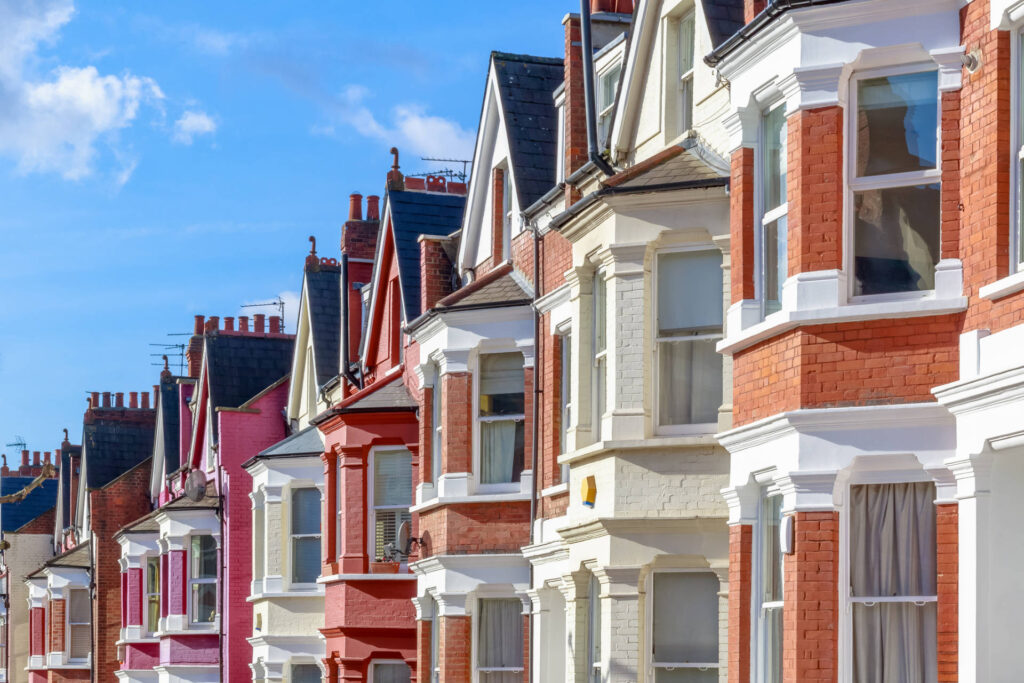Rebound in sales volumes more than prices.
Lawson Estate Agents’ managing director, Darren Lawson reports in his property market update for May that, the housing market continues to register a sustained upturn in new sales while UK house price inflation remains broadly static. The market is more balanced than it has been since before the pandemic. This is positive news and means more people have a chance of moving home in 2024 – so long as sellers remain realistic on pricing – while static prices are not worsening affordability. More homes for sale and renewed confidence amongst buyers continues to support sales agreed which are 12% higher year-on-year. The number of sales agreed has been higher than last year for the last 4 months. The housing sales pipeline is now rebuilding after a period of lower sales when mortgage rates spiked higher in late 2022 into 2023. Industry data shows that the housing market remains on track for 1.1m sales completions in 2024, up 10% on 2023.
The recovery in sales is starting to be reflected in other data such as mortgage approvals for home purchase which were 32% higher in February 2024, returning towards pre-pandemic levels. The 4 to 6+ month time lag between agreeing a sale ‘subject to contract’ and moving in means sales completion data is yet to register an upturn but this will emerge in the coming months.
House price inflation broadly flat.
Latest data shows that house prices are firming as market activity improves. Annual house price inflation is largely unchanged since last month and stands at -0.2% at the end of March 2024. House prices continue to fall, at a slowing rate, across five English regions covering southern England and the East Midlands. Prices are down the most (-1.7%) across East of England. Improving market activity in recent months has resulted in house price inflation turning positive across the three regions of northern England, West Midlands, Wales, Scotland and Northern Ireland. See map for region and country level data.
Mortgage rates remain 2x higher than recent past.
The housing market is continuing to adjust to the ending of ultra-low mortgage rates since 2022. Mortgage rates spiked twice in last two years, at the end of 2022 and over the summer of 2023, as interest rates increased to combat rising inflation. The primary impact on the housing market was a 23% drop in sales over 2023 and modest house price falls which did very little to help reset housing affordability. Average mortgage rates for a 5-year fix at 75% loan-to-value have fallen back to 4.5% over recent months. They have started to drift higher in recent weeks on shifting expectations for interest rates cuts later this year. We expected mortgage rates to average 4.5% over 2024 which in our view is consistent with +/-1% house price growth.
Mortgage costs for home buyers 60% higher than 2021.
When mortgage rates started to rise, we reported that the shift from 2% mortgage rates to 5% would deliver a 30% reduction in buying power for mortgaged home buyers, assuming the borrower kept their repayments and deposits the same. Buyers withdrew from the market in the face of higher borrowing costs and general uncertainty over the economic outlook and this drove transactions lower over 2023. While base rates look to have peaked, and consumer confidence is improving, the reality is that the annual mortgage repayments for a typical buyer using a 70% LTV loan for an average priced home are still much higher than 3 years ago. This continues to act as a drag on buying power and levels of house price inflation. Moving from sub 2% mortgage rates in March 2021 to 4.5% today, the annual mortgage repayments for a home purchase have risen by 61%, from £7,100 to £11,400 at a national level. Two-thirds of this increase is a result of higher mortgage rates. However, one third is down to the fact that average house prices are still 13% higher than March 2021.

Higher mortgage rates hit southern England hardest.
At a region and national level there has been a 50% to 70% increase in mortgage repayments for a typical buyer between 2021 and 2024. The largest monetary impact is in southern England where house prices are higher. The annual cost of mortgage repayments for an average priced home is more than £5,000 a year higher in 2024 than 2021 across the Southwest, Southeast, East of England. This rises to a high of an extra £7,500 in London. Across other regions and countries of the UK the increase is lower, ranging between £2,350 and £3,900 a year. While underlying household incomes will vary by area, this lower additional cost is one reason that market activity and prices are holding up better in more affordable markets with lower prices.
Stamp duty adds to buying costs in southern England.
It’s not just mortgage costs that impact buying decisions. Higher house prices also mean stamp duty costs are much greater across southern England, adding to buying costs. Some 75% of annual stamp duty receipts are from purchases across southern England with these regions accounting for 50% of housing sales.
Buyers open to look further in search for better value.
Data doesn’t suggest that home buyers are looking to buy smaller homes in response to higher borrowing costs – the profile of what is selling by property type and bedrooms remains largely unchanged. However, some buyers are open to look further afield to get what they need. Latest consumer research shows a third of households that want to move are looking to move out of their local area to secure the home they require.
6 in 10 homes in markets registering annual price falls.
The squeeze on housing affordability from higher mortgage rates, lower incomes growth and rising living costs are keeping house prices under steady downward pressure across southern England. Analysis of granular local authority house price indices reveals that 64% of homes are in markets still registering annual price falls. This is lower than the 82% recorded last October. The scale of these price falls is relatively modest, in most cases between 0% and -3%. At a region and national level, the coverage of homes in markets with price falls is greatest across southern England where 95-100% of homes are now in local markets with annual price falls. East Midlands also has a high proportion of markets with price falls at 93%. Across the rest of Great Britain, there are signs of improvement in pricing, with a decline in the proportion of homes in local markets with annual price falls across six regions. Scotland has pockets of lower prices but at a national level price haven’t fallen year-on-year. As the UKs most affordable region, with an average price of £142,000, the Northeast now has no areas with annual price falls.
No signs of an immediate uptick in house price inflation.
It is expected that UK house prices will continue to firm over 2024 but Darren doesn’t expect house price inflation to start accelerating. The current trends in price inflation, and divergence between the south and the rest of the UK are expected to continue over the coming months. Much depends on the outlook for interest rates and how this influences mortgage rates. Fixed rate mortgages today already reflect expectations for interest rate reductions in the future and we don’t expect any major changes in average mortgage rates over the rest of the year. What the housing market needs most is continued price stability which will create the right environment for continued growth in sales.






